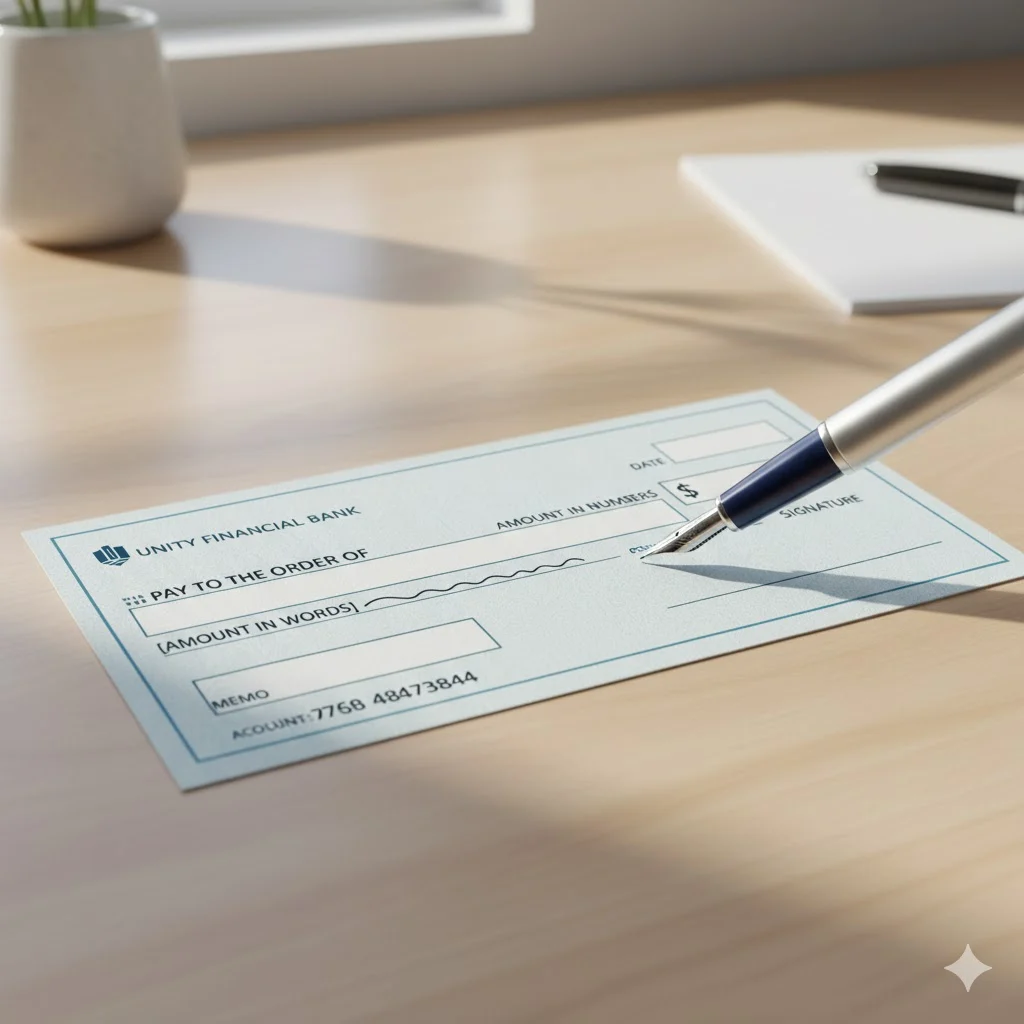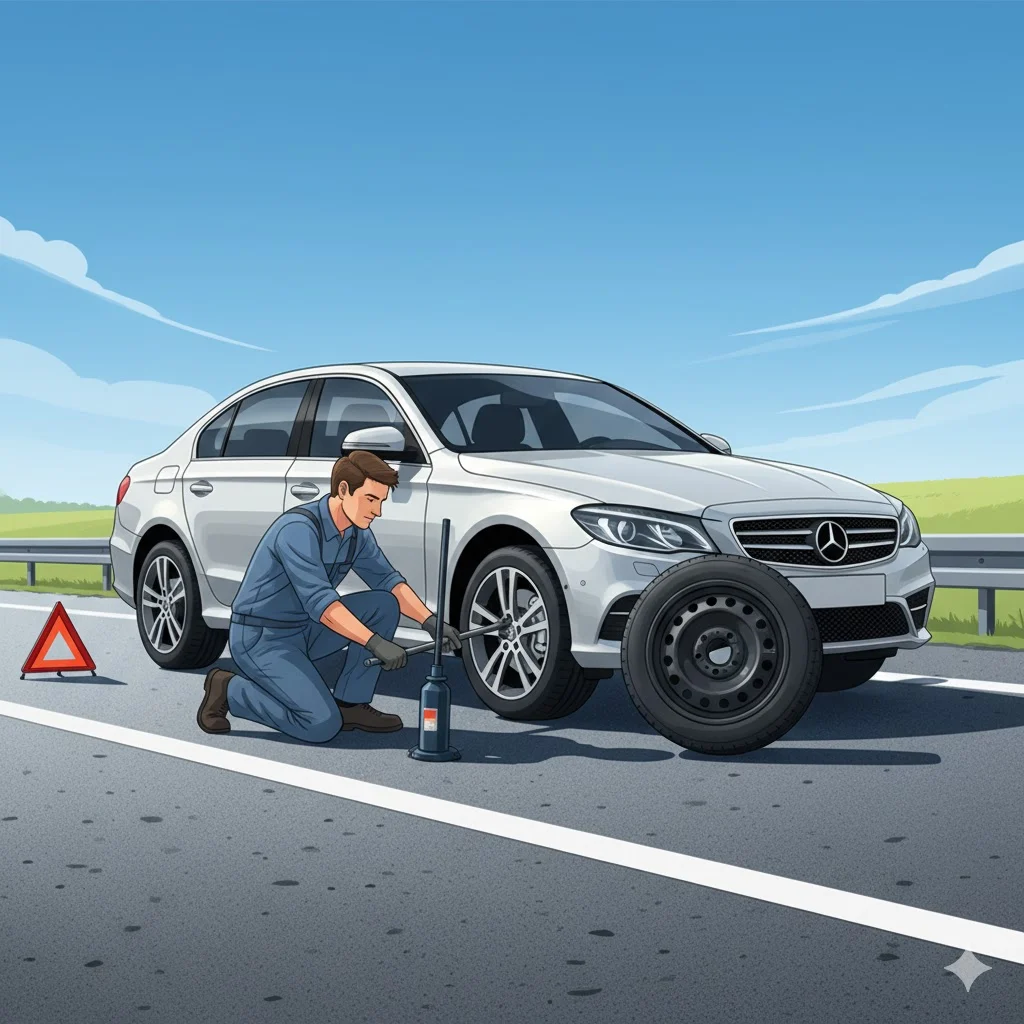Even in today’s digital world, writing a check remains a crucial financial skill. Whether paying rent, utilities, contractors, or giving someone a gift, understanding how to write a check correctly ensures your payment is secure, accurate, and professional.
This guide covers everything from basic definitions to advanced tips, common mistakes, and FAQs. By the end, you’ll have a complete understanding of check writing in 2025.
What is a Check?
A check is a written, dated, and signed document instructing your bank to pay a specific amount of money to a person or organization. Think of it as a paper version of an electronic transfer, giving you control over payments without handing over cash.
Key components include:
- Payee: The person or business receiving the money
- Date: When the check is written
- Amount: The sum written in numbers and words
- Memo Line: Optional note about the purpose of the payment
- Signature: Your authorization to release the funds
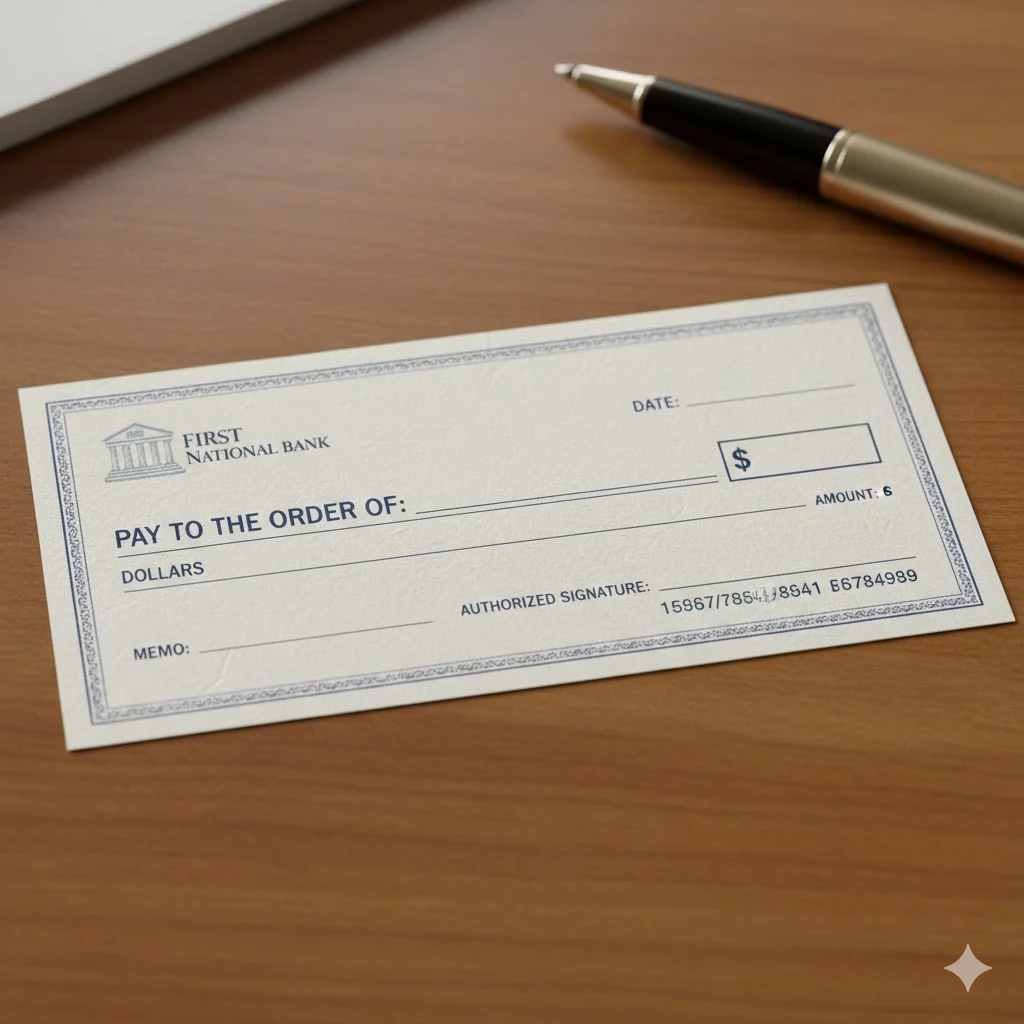
Why Learning How to Write a Check Matters in 2025
Despite the rise of online payments, checks are still widely used in 2025, particularly for:
- Rent and utility payments
- Paying contractors, tutors, or babysitters
- Gifting money or charitable donations
- Situations where digital payments aren’t accepted
Why mastering check writing matters:
- Financial literacy: Helps you understand and manage your finances
- Security: Reduces the risk of errors or fraud
- Record keeping: Provides a clear payment trail for personal and business accounting
Essential Components of a Check
Before writing a check, it’s crucial to understand its structure.
| Component | Description |
|---|---|
| Date | The day you write the check; can be today or postdated |
| Payee | The person or organization receiving the money |
| Amount (Numeric) | The payment amount written in numbers |
| Amount (Words) | The payment amount spelled out; prevents disputes |
| Memo Line | Optional note about the purpose of the payment |
| Signature | Authorizes the bank to release the funds |
| Bank Details | Your account number, routing number, and check number |
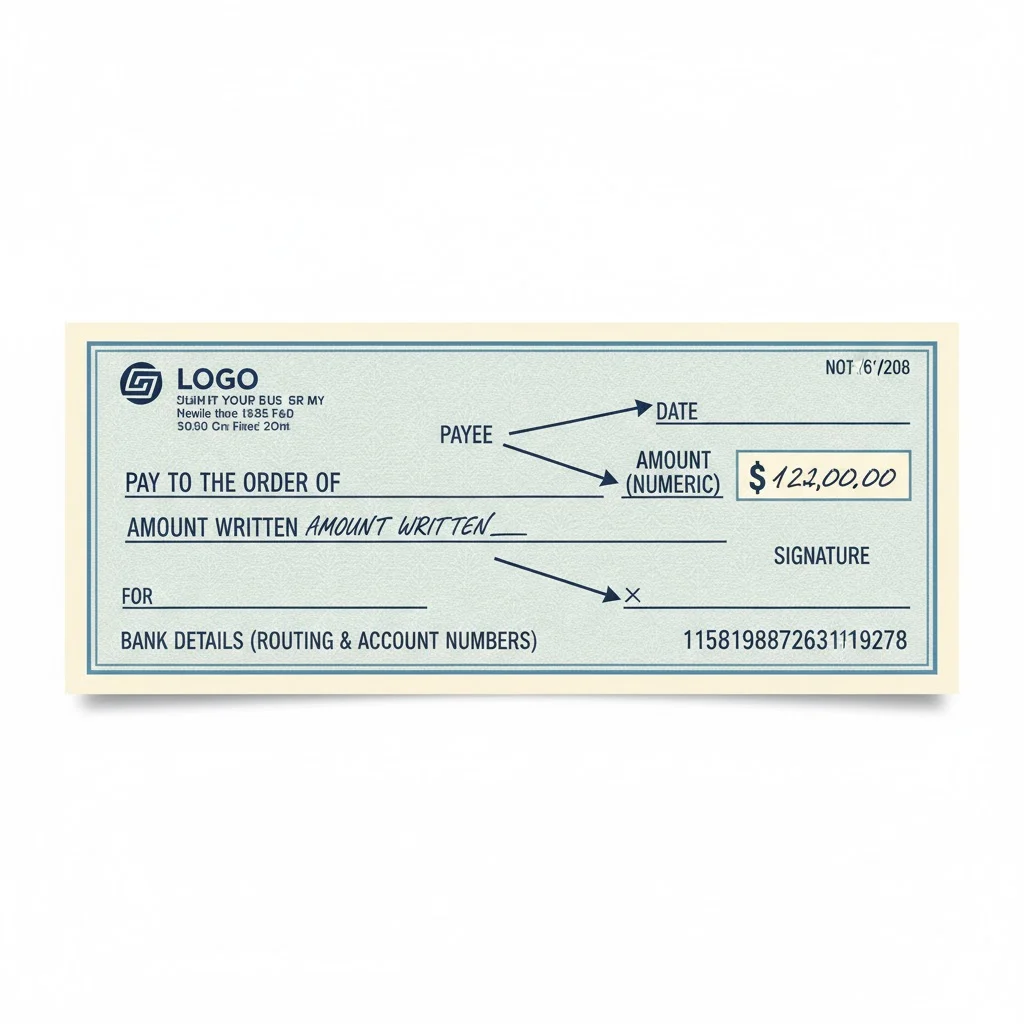
Step-by-Step Guide to Writing a Check
Writing a check correctly prevents errors and ensures your payment is processed smoothly. Follow these steps carefully.
Step 1: Write the Date
The date goes in the top-right corner of the check.
Formats:
- MM/DD/YYYY: 10/11/2025
- Month Day, Year: October 11, 2025
Tip: Use today’s date unless you are intentionally postdating the check.
Step 2: Fill in the Payee Name
Write the name of the person or company on the line that says “Pay to the order of.”
Examples:
- John Doe
- ABC Utilities
Tip: Double-check spelling to avoid rejected checks.
Step 3: Write the Amount in Numbers
In the box to the right, write the payment amount clearly.
Example:
$250.50
Tip: Start at the far left of the box to prevent tampering.
Step 4: Write the Amount in Words
Spell out the payment amount on the line below the payee name.
Example:
- Two hundred fifty and 50/100 dollars
Tip: Draw a line after the words to fill empty space.
Step 5: Fill Out the Memo Line
The memo line is optional but useful for personal records.
Examples:
- October rent
- Birthday gift
- Invoice #12345
Tip: Helps both you and the payee remember the purpose of the check.
Step 6: Sign the Check
Sign your check on the bottom-right line. This authorizes your bank to process the payment.
Tip: Always use the signature your bank has on file.
Example of a Completed Check
| Field | Example |
|---|---|
| Date | October 11, 2025 |
| Payee | John Doe |
| Amount (Numeric) | $250.50 |
| Amount (Words) | Two hundred fifty and 50/100 dollars |
| Memo | October rent |
| Signature | John A. Smith |
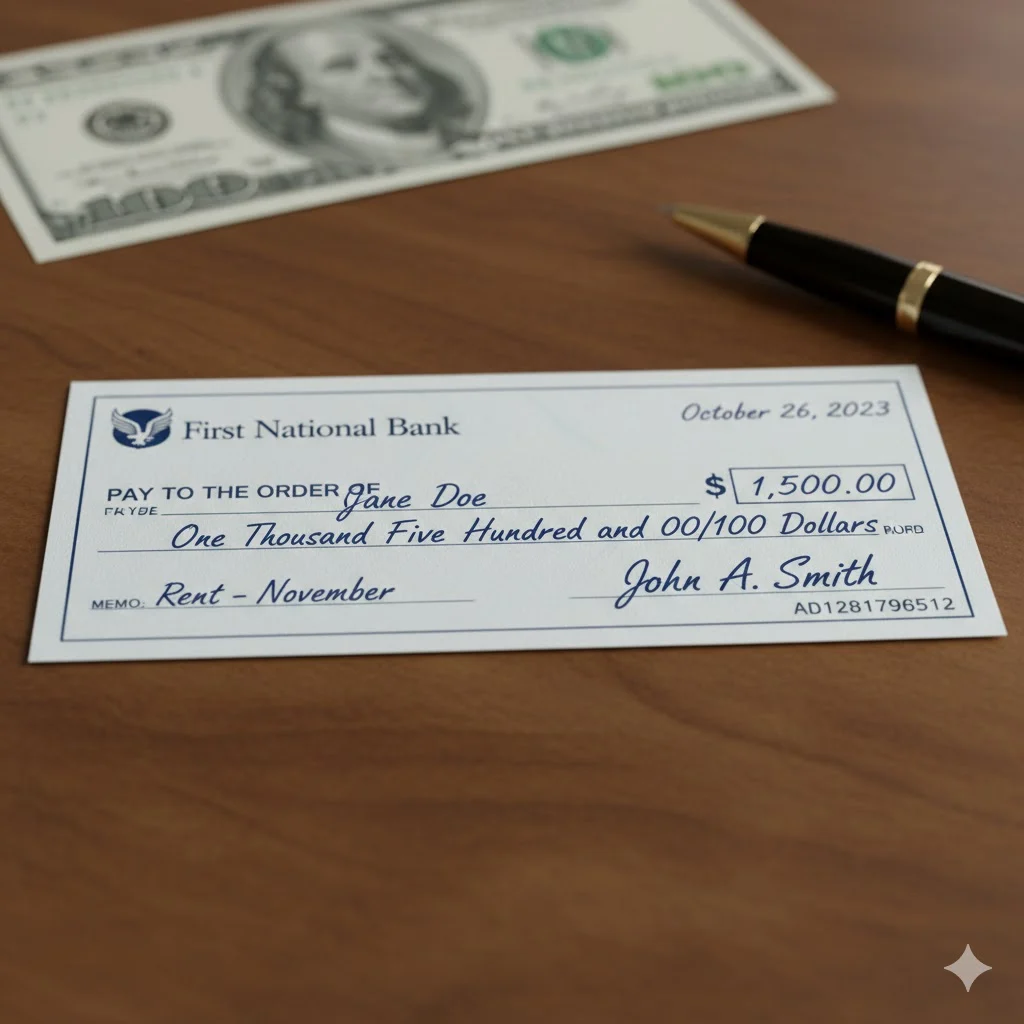
Common Mistakes to Avoid
- Leaving blank spaces – Could allow fraud or errors.
- Mismatch between numbers and words – Banks honor the written words over numbers.
- Unsigned checks – Invalid without a signature.
- Incorrect payee spelling – May lead to check rejection.
- Postdating without notifying – Some banks cash checks immediately.
Tips for Safe Check Writing
- Keep checks secure: Store in a locked drawer or safe.
- Use permanent ink: Prevents alterations.
- Monitor account activity: Quickly spot unauthorized transactions.
- Record checks in a register: Track spending and avoid overdrafts.
- Do not sign blank checks: Risk of fraud.
Types of Checks and When to Use Them
| Type of Check | When to Use |
|---|---|
| Personal Check | Everyday payments like rent, utilities, gifts |
| Cashier’s Check | Large payments; bank guarantees funds |
| Certified Check | Confirms sufficient funds in your account |
| Payroll Check | Employee salary payments |
| Traveler’s Check | Secure for travel instead of cash |
Digital vs. Paper Checks in 2025
Even with digital banking, paper checks remain relevant, especially for businesses or personal transactions where electronic payments aren’t possible.
Digital check advantages:
- Instant transfers
- Automatic record-keeping
- Reduced risk of lost checks
Paper check advantages:
- Tangible record of payment
- Accepted widely in traditional transactions
- No need for internet access
Tip: Use both strategically based on payment context.
How to Keep Track of Your Checks
Keeping accurate records is essential. You can:
- Use a check register: Manually log checks and balances
- Use bank apps: Track deposits, payments, and alerts
- Reconcile monthly: Match your register with bank statements
FAQs About Writing a Check
Q1: Can I postdate a check?
Yes, but inform the payee; some banks may process immediately.
Q2: How long is a check valid?
Typically 6 months, but verify with your bank.
Q3: Can I write a check without a bank account?
No, you need an account linked to the check.
Q4: What if I make a mistake on a check?
Void it and write a new one. Never erase or correct a check.
Q5: Is the memo line required?
No, but useful for record-keeping.
Q6: Can I pay a check to myself?
Yes, you can deposit it into another account.
Q7: What is a bounced check?
A check that cannot be processed due to insufficient funds.
Q8: How do I stop a check payment?
Contact your bank immediately to issue a stop payment.
Q9: What is a check register?
A log of checks written and deposits made to monitor account balance.
Q10: Are checks safe in 2025?
Yes, if properly written and monitored; combine with digital banking for extra security.
Conclusion
Knowing how to write a check remains a vital financial skill. By following this step-by-step guide, you can write checks accurately, avoid common mistakes, and maintain proper financial records. Whether paying rent, a contractor, or giving a gift, understanding checks ensures your money reaches the intended recipient securely.

